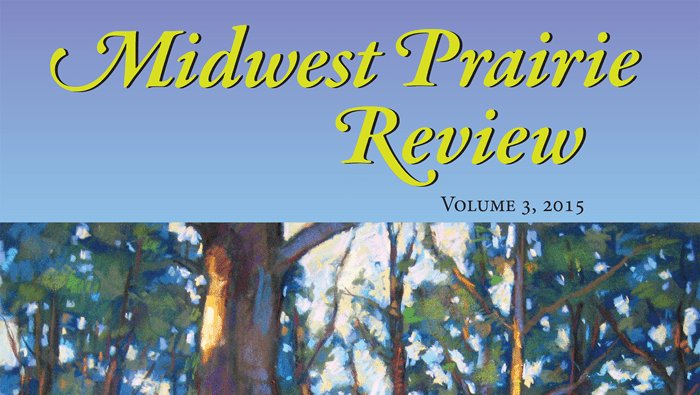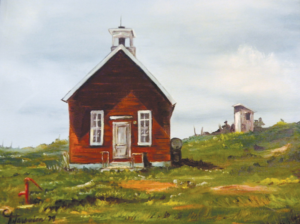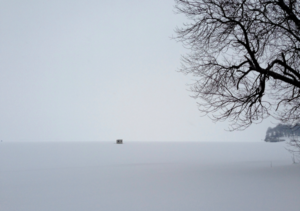
Holding the current issue of the Midwest Prairie Review, you feel you have a piece of the heartland in your hands.

The literary magazine places readers squarely in the Upper Midwest, with its photographs of snow-covered houses, its poems about Harley-Davidson motorcycles, and its short stories about saunas and Super Bowls in the frozen north.
The Midwest Prairie Review is published by the University of Wisconsin-Madison’s Division of Continuing Studies, showcasing participants from its writing programs. The publication’s third edition is a carefully curated selection of visual art, fiction, and creative nonfiction, with a wide range of perspectives in its narrow geographical limits.
“We’re proud of the talented writers who grace our programs throughout the year, and it was difficult to adhere to our space limits due to the volume of excellent submissions,” says founding editor Laurie Scheer. “The Midwest Prairie Review is a sampling of our voice—a voice from the prairie.”
Chilled sparrows
Appropriately, the volume opens with a shiver. In Paula Cooper Hughes’ photograph “Bleak Fishing Hut Dark,” a tiny black hut marks the intersection of gray sky and iced-over lake. On the same page, Greg Smith’s haiku “January” evokes the striking image of “Forsythia’s iced arches/Strung with chilled sparrows.”

The works that follow establish a strong sense of place. Lee Melahn’s “Meat Raffles” is set at Madison’s Villa Tap, a “tavern located on Packers Avenue, a rifle shot down the road from the Oscar Mayer plant.” There, on a snowy Saturday afternoon, the narrator partakes of a boozy Wisconsin tribal ritual: the meat raffle, a game of chance that pays off in steak, bacon, and rump roast.
Sylvia Cavanaugh’s poem “Biker Bar” follows a motorcycle roaring down “swerving country roads/through lilac scent that burst/its fenced-in borders.” The journey doesn’t turn out well for the narrator, who accompanies her husband to a biker bar in an attempt to save her marriage.
Larry Scheckel’s painting “Oak Grove School” pictures a one-room schoolhouse standing solidly in a sea of grass. On the facing page is his reminiscence of attending the rural Wisconsin school in the 1940s and ‘50s, when it was “the educational and social center” for local farm families. “Everyone attended the basket social in late October, the Christmas program, and the end-of-year picnic in late May,” Scheckel writes.
Butter-colored fluffballs

The Midwest Prairie Review closes with Pam Holtman’s “The Year of the Chickens,” set in an Upper Midwestern farmhouse. The narrator’s father has the bright idea of answering an ad in the local newspaper for free baby chicks. “Just think,” he says, “fresh eggs every morning and free chicken meat.”
Unfortunately, the chicks grow from “butter-colored fluffballs” into monsters whose “feet and legs had turned reptilian and ended in sharp, hooked nails.” A vivid butchery scene is guaranteed to put you off fried chicken for the foreseeable future.
To obtain a copy of the Midwest Prairie Review or inquire about Continuing Studies’ writing programs, contact new managing editor Christopher Chambers, cchambers@dcs.wisc.edu, 608-262-5095. The publication is accepting submissions for the 2016 edition until October 1; for guidelines, see here.